
How to Use ESP32S3 WROOM-1U: Examples, Pinouts, and Specs
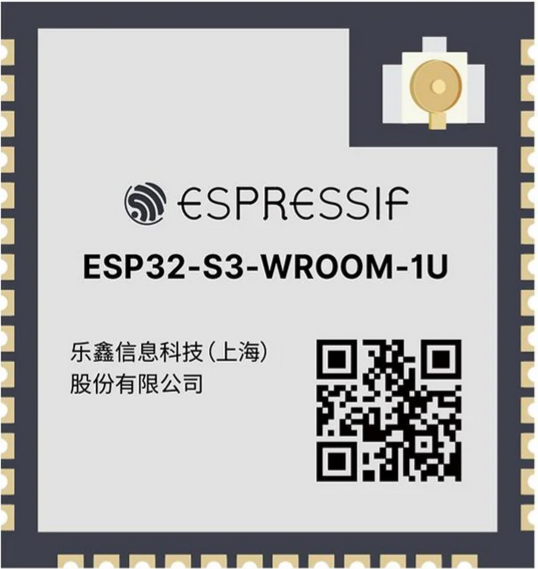
 Design with ESP32S3 WROOM-1U in Cirkit Designer
Design with ESP32S3 WROOM-1U in Cirkit DesignerIntroduction
The ESP32-S3-WROOM-1U is a high-performance Wi-Fi and Bluetooth microcontroller module developed by Espressif. It features a dual-core processor, integrated memory, and a wide range of GPIO options, making it an excellent choice for IoT (Internet of Things) applications. This module is designed for applications requiring high processing power, wireless connectivity, and low power consumption.
Explore Projects Built with ESP32S3 WROOM-1U
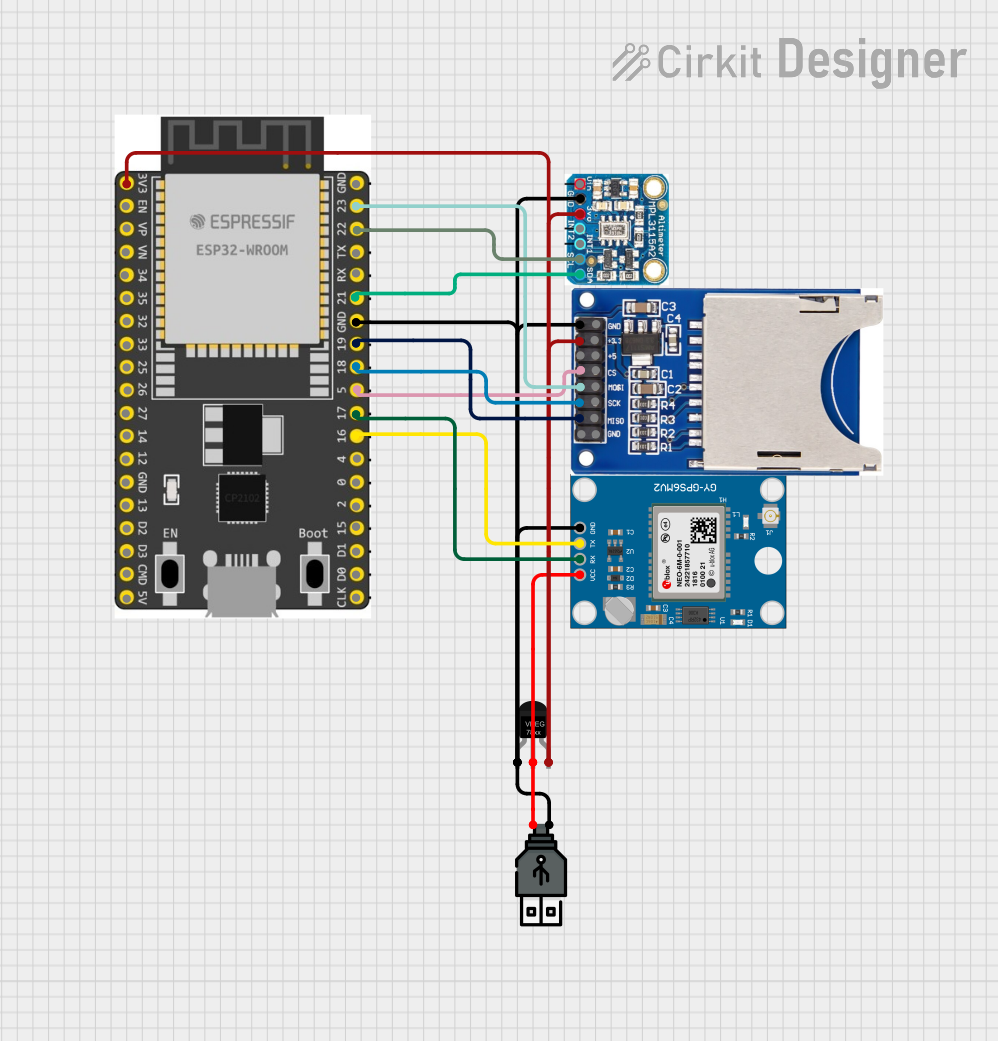
 Open Project in Cirkit Designer
Open Project in Cirkit Designer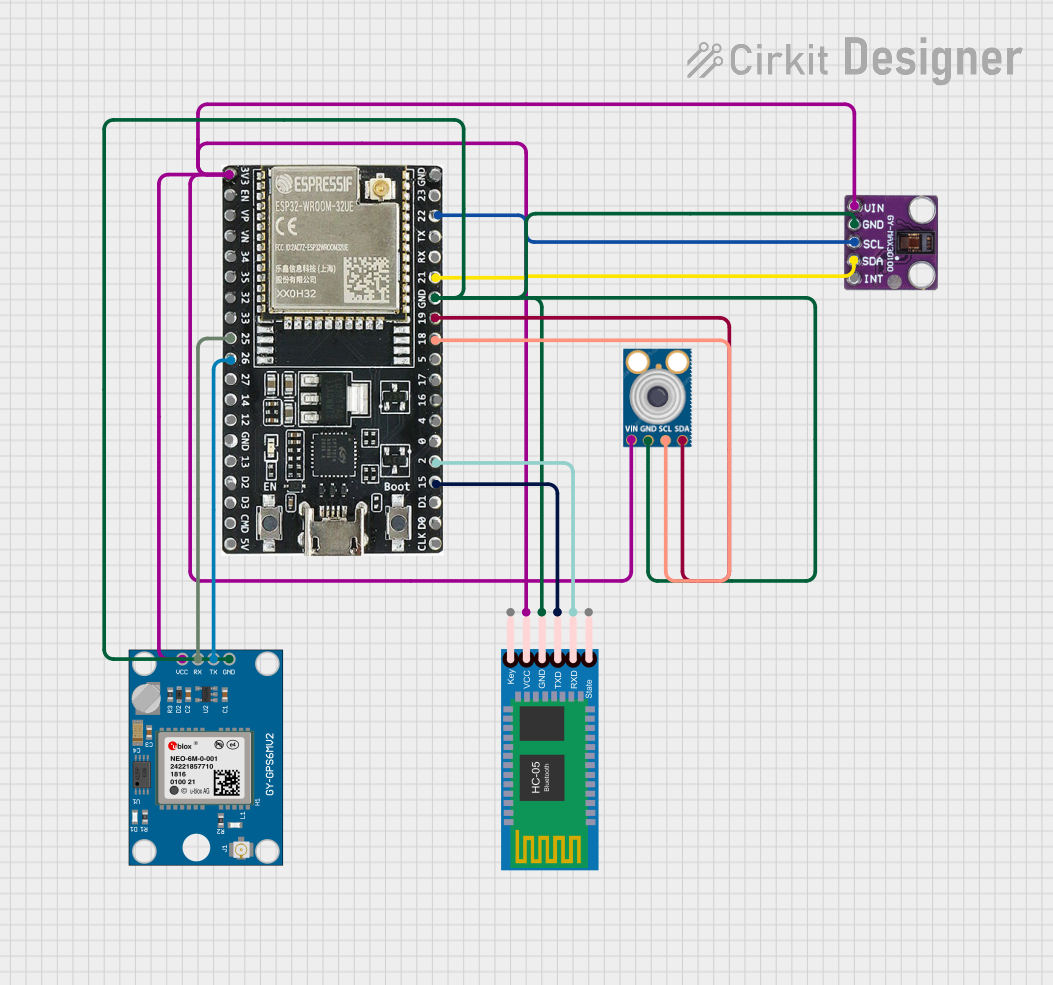
 Open Project in Cirkit Designer
Open Project in Cirkit Designer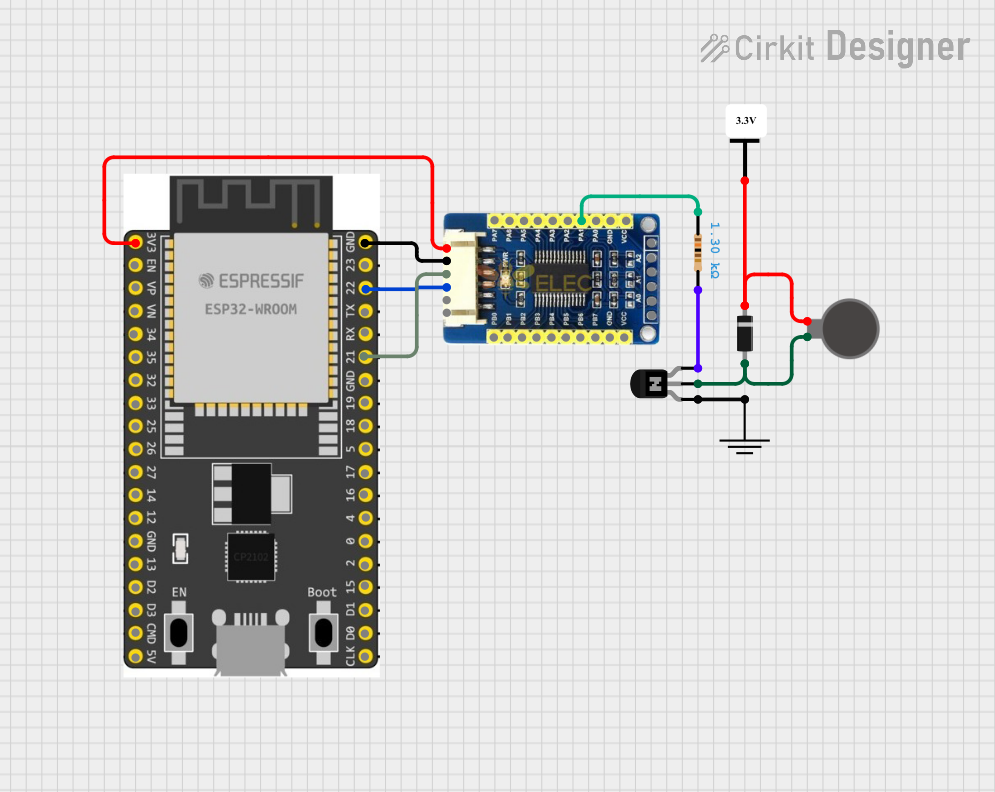
 Open Project in Cirkit Designer
Open Project in Cirkit Designer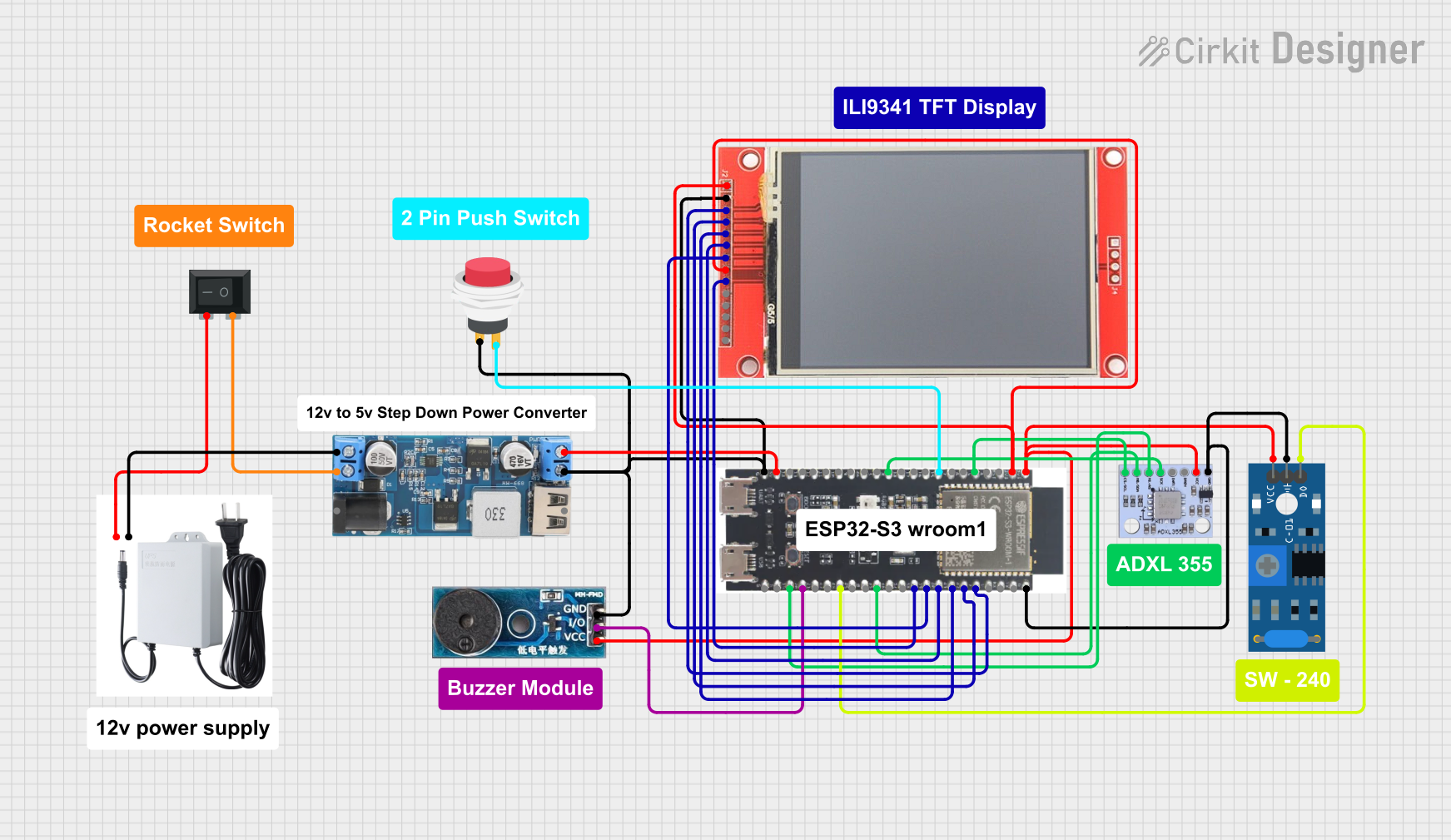
 Open Project in Cirkit Designer
Open Project in Cirkit DesignerExplore Projects Built with ESP32S3 WROOM-1U

 Open Project in Cirkit Designer
Open Project in Cirkit Designer
 Open Project in Cirkit Designer
Open Project in Cirkit Designer
 Open Project in Cirkit Designer
Open Project in Cirkit Designer
 Open Project in Cirkit Designer
Open Project in Cirkit DesignerCommon Applications and Use Cases
- Smart home devices (e.g., smart lights, thermostats)
- Wearable electronics
- Industrial IoT systems
- Wireless sensor networks
- Robotics and automation
- Audio streaming and voice recognition systems
Technical Specifications
The ESP32-S3-WROOM-1U module is built for versatility and performance. Below are its key technical details:
Key Technical Details
| Parameter | Specification |
|---|---|
| Microcontroller | ESP32-S3 (Xtensa® 32-bit LX7 dual-core processor) |
| Clock Speed | Up to 240 MHz |
| Wireless Connectivity | Wi-Fi 802.11 b/g/n (2.4 GHz), Bluetooth 5 (LE) |
| Flash Memory | 4 MB (default) |
| SRAM | 512 KB |
| PSRAM (Optional) | Up to 8 MB |
| Operating Voltage | 3.0V to 3.6V |
| GPIO Pins | 45 (configurable for various functions) |
| Interfaces | SPI, I2C, I2S, UART, PWM, ADC, DAC, USB-OTG |
| Power Consumption | Ultra-low power in deep sleep mode (~10 µA) |
| Antenna | External antenna (U.FL connector) |
| Dimensions | 13.2 mm x 16.6 mm x 2.4 mm |
Pin Configuration and Descriptions
The ESP32-S3-WROOM-1U module has a total of 38 pins exposed for use. Below is the pinout description:
| Pin Number | Name | Function Description |
|---|---|---|
| 1 | GND | Ground |
| 2 | 3V3 | Power supply (3.3V) |
| 3 | EN | Enable pin (active high) |
| 4 | IO0 | GPIO0, boot mode selection, ADC, or other uses |
| 5 | IO1 | GPIO1, UART TXD, or other uses |
| 6 | IO2 | GPIO2, ADC, or other uses |
| 7 | IO3 | GPIO3, UART RXD, or other uses |
| 8 | IO4 | GPIO4, PWM, or other uses |
| ... | ... | ... |
| 38 | IO37 | GPIO37, ADC, or other uses |
Note: Refer to the official datasheet for the complete pinout and advanced configurations.
Usage Instructions
The ESP32-S3-WROOM-1U is versatile and can be used in a variety of circuits. Below are the steps and best practices for using this module:
How to Use the Component in a Circuit
- Power Supply: Provide a stable 3.3V power supply to the
3V3pin. Ensure the current rating of the power source meets the module's requirements. - Boot Mode: Connect the
IO0pin to GND during power-up to enter bootloader mode for programming. - External Antenna: Attach an external antenna to the U.FL connector for optimal wireless performance.
- GPIO Configuration: Configure the GPIO pins as needed for your application (e.g., input, output, ADC, PWM).
- Programming: Use the USB-OTG interface or an external UART-to-USB converter to upload firmware.
Important Considerations and Best Practices
- Decoupling Capacitors: Place decoupling capacitors (e.g., 0.1 µF) near the power pins to reduce noise.
- Antenna Placement: Ensure the external antenna is placed away from metal objects to avoid signal interference.
- Deep Sleep Mode: Use the deep sleep mode to minimize power consumption in battery-powered applications.
- Firmware Updates: Always use the latest firmware from Espressif to ensure optimal performance and security.
Example: Connecting to an Arduino UNO
The ESP32-S3-WROOM-1U can be programmed using the Arduino IDE. Below is an example code snippet to connect the module to a Wi-Fi network:
#include <WiFi.h> // Include the Wi-Fi library for ESP32
// Replace with your network credentials
const char* ssid = "Your_SSID";
const char* password = "Your_PASSWORD";
void setup() {
Serial.begin(115200); // Initialize serial communication
delay(1000);
Serial.println("Connecting to Wi-Fi...");
WiFi.begin(ssid, password); // Start Wi-Fi connection
while (WiFi.status() != WL_CONNECTED) {
delay(500);
Serial.print("."); // Print dots while connecting
}
Serial.println("\nWi-Fi connected!");
Serial.print("IP Address: ");
Serial.println(WiFi.localIP()); // Print the assigned IP address
}
void loop() {
// Add your main code here
}
Note: Ensure the ESP32-S3-WROOM-1U is in programming mode when uploading the code.
Troubleshooting and FAQs
Common Issues and Solutions
Module Not Powering On
- Cause: Insufficient power supply.
- Solution: Ensure the power source provides a stable 3.3V with sufficient current.
Wi-Fi Connection Fails
- Cause: Incorrect SSID or password.
- Solution: Double-check the network credentials in your code.
Cannot Upload Code
- Cause: Incorrect boot mode or driver issues.
- Solution: Ensure
IO0is connected to GND during programming and install the correct USB drivers.
Poor Wireless Signal
- Cause: Antenna placement or interference.
- Solution: Reposition the antenna and avoid placing it near metal objects.
FAQs
Q: Can I use the ESP32-S3-WROOM-1U with a 5V power supply?
A: No, the module requires a 3.3V power supply. Use a voltage regulator if needed.Q: Does the module support Bluetooth audio?
A: Yes, the ESP32-S3 supports Bluetooth Low Energy (BLE) and Bluetooth audio applications.Q: How do I reset the module?
A: Pull theENpin low momentarily to reset the module.Q: Can I use the module without an external antenna?
A: No, the ESP32-S3-WROOM-1U requires an external antenna for wireless communication.
By following this documentation, you can effectively integrate the ESP32-S3-WROOM-1U into your projects and troubleshoot common issues. For more advanced configurations, refer to the official Espressif datasheet.